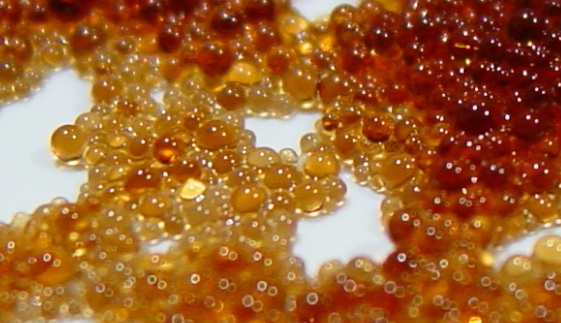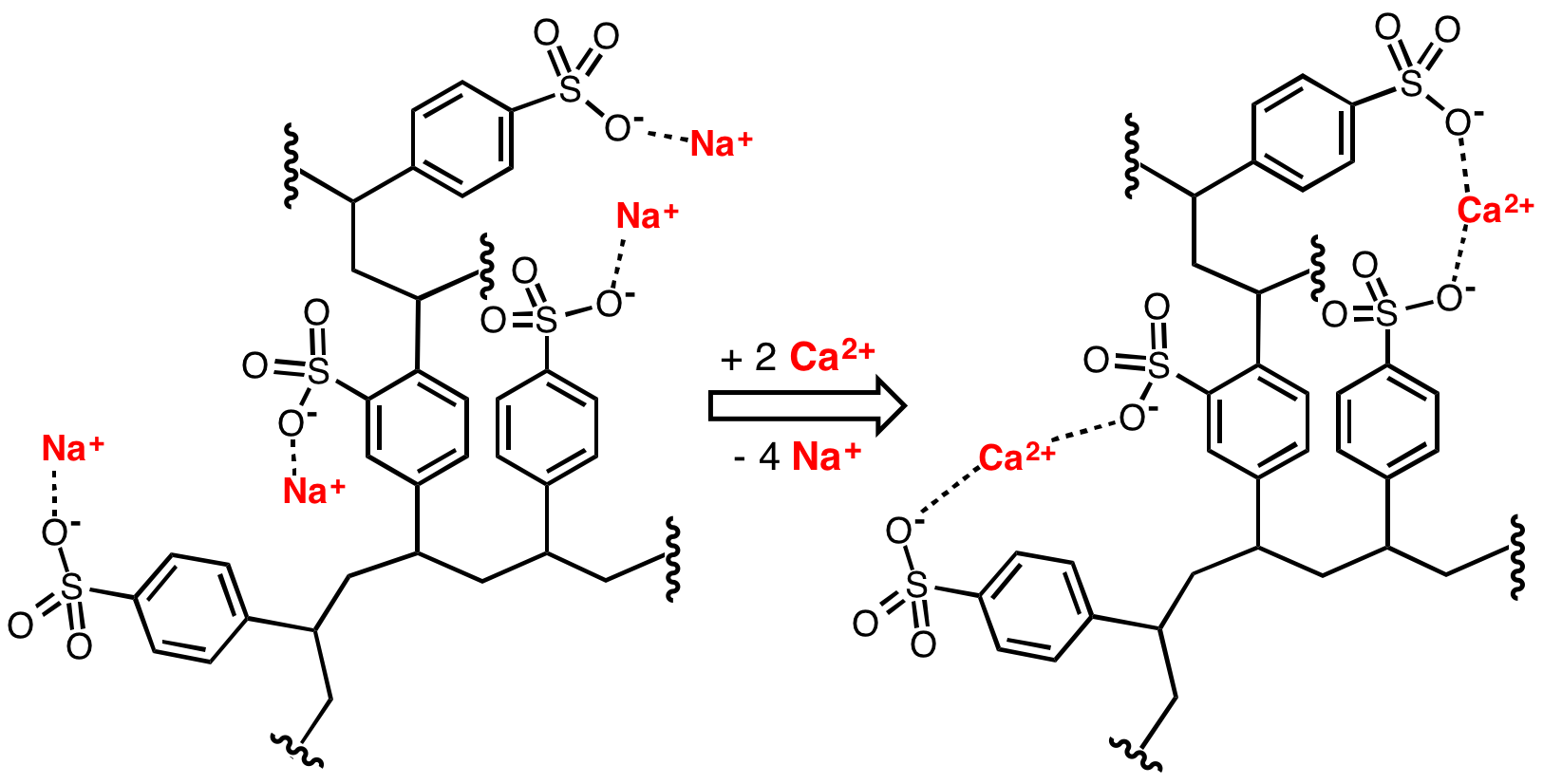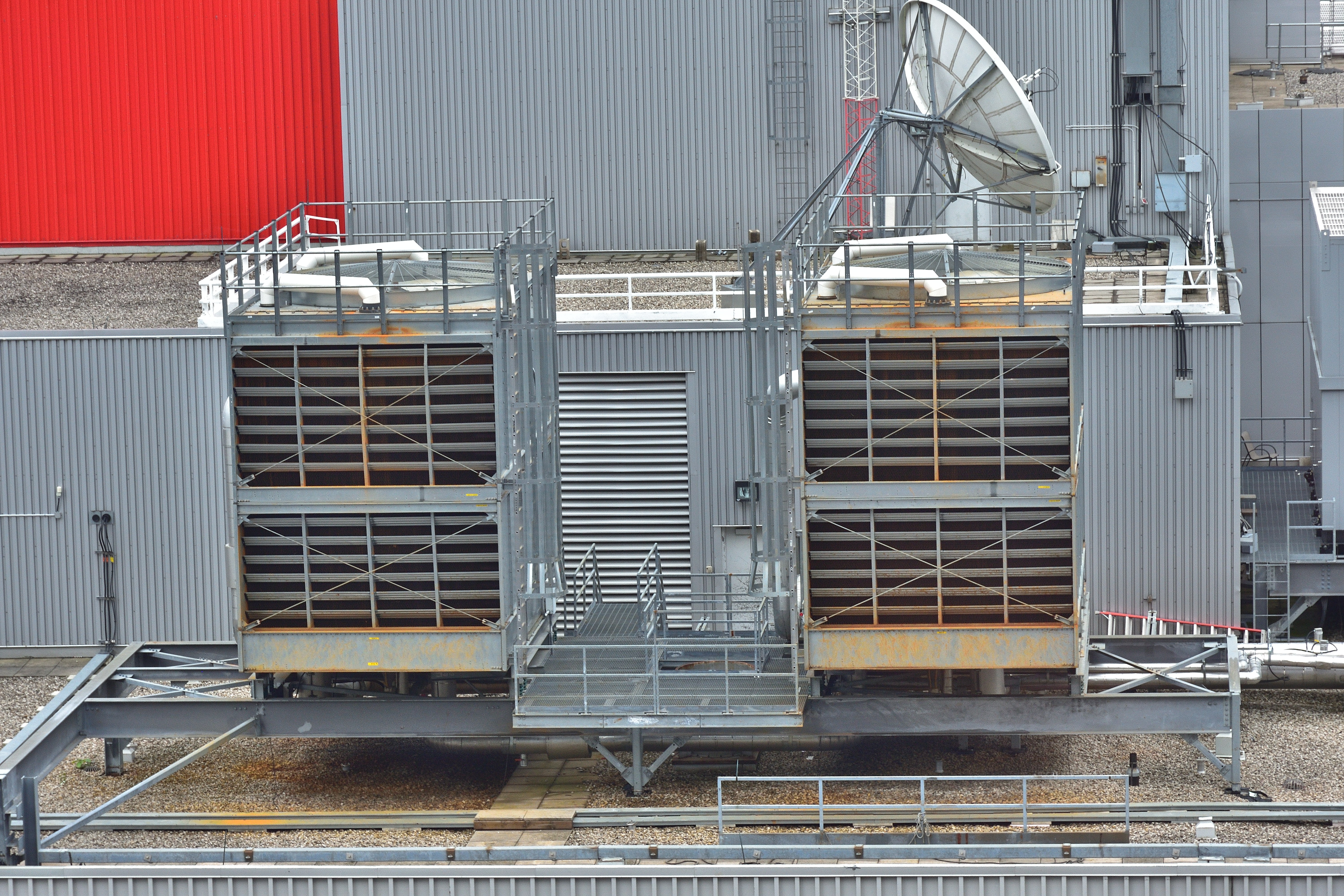|
Condensate Polisher
A condensate polisher is a device used to filter water condensed from steam as part of the steam cycle, for example in a conventional or nuclear power plant (powdered resin or deep bed system). It is frequently filled with polymer resins which are used to ion exchange, remove or exchange ions such that the purity of the condensate is maintained at or near that of distilled water. Description Condensate polishers are important in systems using the boiling and condensing of water to transport or transform thermal energy. Using technology similar to a water softener, trace amounts of minerals or other contamination are removed from the system before such contamination becomes concentrated enough to cause problems by depositing minerals inside pipes, or within precision-engineered devices such as boilers, steam generator (nuclear power), steam generators, heat exchangers, steam turbines, cooling towers, and Condenser (heat transfer), condensers. The removal of minerals has the seconda ... [...More Info...] [...Related Items...] OR: [Wikipedia] [Google] [Baidu] |
Steam Cycle
The Rankine cycle is an idealized thermodynamic cycle describing the process by which certain heat engines, such as steam turbines or reciprocating steam engines, allow mechanical work to be extracted from a fluid as it moves between a heat source and heat sink. The Rankine cycle is named after William John Macquorn Rankine, a Scottish polymath professor at Glasgow University. Heat energy is supplied to the system via a boiler where the working fluid (typically water) is converted to a high pressure gaseous state (steam) in order to turn a turbine. After passing over the turbine the fluid is allowed to condense back into a liquid state as waste heat energy is rejected before being returned to boiler, completing the cycle. Friction losses throughout the system are often neglected for the purpose of simplifying calculations as such losses are usually much less significant than thermodynamic losses, especially in larger systems. Description The Rankine cycle closely describes the ... [...More Info...] [...Related Items...] OR: [Wikipedia] [Google] [Baidu] |
Nuclear Power Plant
A nuclear power plant (NPP) is a thermal power station in which the heat source is a nuclear reactor. As is typical of thermal power stations, heat is used to generate steam that drives a steam turbine connected to a electric generator, generator that produces electricity. , the International Atomic Energy Agency reported there were 422 nuclear power reactors in operation in 32 countries around the world, and 57 nuclear power reactors under construction. Nuclear plants are very often used for base load since their operations, maintenance, and fuel costs are at the lower end of the spectrum of costs. However, building a nuclear power plant often spans five to ten years, which can accrue to significant financial costs, depending on how the initial investments are financed. Nuclear power plants have a carbon footprint comparable to that of renewable energy such as photovoltaic power station, solar farms and wind farms, and much lower than fossil fuels such as gas-fired ... [...More Info...] [...Related Items...] OR: [Wikipedia] [Google] [Baidu] |
Polymer Resin
A polymer (; Greek '' poly-'', "many" + ''-mer'', "part") is a substance or material consisting of very large molecules called macromolecules, composed of many repeating subunits. Due to their broad spectrum of properties, both synthetic and natural polymers play essential and ubiquitous roles in everyday life. Polymers range from familiar synthetic plastics such as polystyrene to natural biopolymers such as DNA and proteins that are fundamental to biological structure and function. Polymers, both natural and synthetic, are created via polymerization of many small molecules, known as monomers. Their consequently large molecular mass, relative to small molecule compounds, produces unique physical properties including toughness, high elasticity, viscoelasticity, and a tendency to form amorphous and semicrystalline structures rather than crystals. The term "polymer" derives from the Greek word πολύς (''polus'', meaning "many, much") and μέρος (''meros'', meaning "part ... [...More Info...] [...Related Items...] OR: [Wikipedia] [Google] [Baidu] |
Ion Exchange
Ion exchange is a reversible interchange of one kind of ion present in an insoluble solid with another of like charge present in a solution surrounding the solid with the reaction being used especially for softening or making water demineralised, the purification of chemicals and separation of substances. Ion exchange usually describes a process of purification of aqueous solutions using solid polymeric ion-exchange resin. More precisely, the term encompasses a large variety of processes where ions are exchanged between two electrolytes. Aside from its use to purify drinking water, the technique is widely applied for purification and separation of a variety of industrially and medicinally important chemicals. Although the term usually refers to applications of synthetic (man-made) resins, it can include many other materials such as soil. Typical ion exchangers are ion-exchange resins (functionalized porous or gel polymer), zeolites, montmorillonite, clay, and soil humus. Ion exc ... [...More Info...] [...Related Items...] OR: [Wikipedia] [Google] [Baidu] |
Distilled Water
Distilled water is water that has been boiled into vapor and condensed back into liquid in a separate container. Impurities in the original water that do not boil below or near the boiling point of water remain in the original container. Thus, distilled water is a type of purified water. History Drinking water has been distilled from seawater since at least about AD 200, when the process was clearly described by Alexander of Aphrodisias. Its history predates this, as a passage in Aristotle's ''Meteorologica'' refers to the distillation of water. Captain Israel Williams of the ''Friendship'' (1797) improvised a way to distill water, which he described in his journal. Applications In chemical and biological laboratories, as well as in industry, in some appliances deionised water can be used instead of distilled water as a cheaper alternative. If exceptionally high-purity water is required, double distilled water is used. In general, non-purified water could cause or interfere wi ... [...More Info...] [...Related Items...] OR: [Wikipedia] [Google] [Baidu] |
Thermal Energy
The term "thermal energy" is used loosely in various contexts in physics and engineering. It can refer to several different well-defined physical concepts. These include the internal energy or enthalpy of a body of matter and radiation; heat, defined as a type of energy transfer (as is thermodynamic work); and the characteristic energy of a degree of freedom, k_T, in a system that is described in terms of its microscopic particulate constituents (where T denotes temperature and k_ denotes the Boltzmann constant). Relation to heat and internal energy In thermodynamics, heat is energy transferred to or from a thermodynamic system by mechanisms other than thermodynamic work or transfer of matter, such as conduction, radiation, and friction. Heat refers to a quantity transferred between systems, not to a property of any one system, or "contained" within it. On the other hand, internal energy and enthalpy are properties of a single system. Heat and work depend on the way in which ... [...More Info...] [...Related Items...] OR: [Wikipedia] [Google] [Baidu] |
Water Softener
Water softening is the removal of calcium, magnesium, and certain other metal cations in hard water. The resulting soft water requires less soap for the same cleaning effort, as soap is not wasted bonding with calcium ions. Soft water also extends the lifetime of plumbing by reducing or eliminating scale build-up in pipes and fittings. Water softening is usually achieved using lime softening or ion-exchange resins but is increasingly being accomplished using nanofiltration or reverse osmosis membranes. Rationale The presence of certain metal ions like calcium and magnesium, principally as bicarbonates, chlorides, and sulfates, in water causes a variety of problems. Hard water leads to the buildup of limescale, which can foul plumbing, and promote galvanic corrosion. In industrial scale water softening plants, the effluent flow from the re-generation process can precipitate scale that can interfere with sewage systems. The slippery feeling associated with washing in soft water ... [...More Info...] [...Related Items...] OR: [Wikipedia] [Google] [Baidu] |
Boiler
A boiler is a closed vessel in which fluid (generally water) is heated. The fluid does not necessarily boil. The heated or vaporized fluid exits the boiler for use in various processes or heating applications, including water heating, central heating, boiler-based power generation, cooking, and sanitation. Heat sources In a fossil fuel power plant using a steam cycle for power generation, the primary heat source will be combustion of coal, oil, or natural gas. In some cases byproduct fuel such as the carbon monoxide rich offgasses of a coke battery can be burned to heat a boiler; biofuels such as bagasse, where economically available, can also be used. In a nuclear power plant, boilers called steam generators are heated by the heat produced by nuclear fission. Where a large volume of hot gas is available from some process, a heat recovery steam generator or recovery boiler can use the heat to produce steam, with little or no extra fuel consumed; such a configuration is common ... [...More Info...] [...Related Items...] OR: [Wikipedia] [Google] [Baidu] |
Steam Generator (nuclear Power)
Steam generators are heat exchangers used to convert water into steam from heat produced in a nuclear reactor core. They are used in pressurized water reactors (PWR) between the primary and secondary coolant loops. In typical PWR designs, the primary coolant is high-purity water, kept under high pressure so it cannot boil. This primary coolant is pumped through the reactor core where it absorbs heat from the fuel rods. It then passes through the steam generator, where it transfers its heat (via conduction through metal) to lower-pressure water which is allowed to boil. Purpose Unlike PWRs, boiling water reactors (BWRs) do not use steam generators. The primary coolant is allowed to boil directly in the reactor core, and the steam is simply passed through a steam turbine. While theoretically simple, this has a downside for maintenance. While passing through the core, primary coolant water is subjected to high neutron flux. This activates oxygen and dissolved nitrogen in the water. ... [...More Info...] [...Related Items...] OR: [Wikipedia] [Google] [Baidu] |
Heat Exchanger
A heat exchanger is a system used to transfer heat between a source and a working fluid. Heat exchangers are used in both cooling and heating processes. The fluids may be separated by a solid wall to prevent mixing or they may be in direct contact. They are widely used in space heating, refrigeration, air conditioning, power stations, chemical plants, petrochemical plants, petroleum refineries, natural-gas processing, and sewage treatment. The classic example of a heat exchanger is found in an internal combustion engine in which a circulating fluid known as engine coolant flows through radiator coils and air flows past the coils, which cools the coolant and heats the incoming air. Another example is the heat sink, which is a passive heat exchanger that transfers the heat generated by an electronic or a mechanical device to a fluid medium, often air or a liquid coolant. Flow arrangement Image:Heat_exc_1-1.svg, Fig. 1: Shell and tube heat exchanger, single pass (1–1 parallel f ... [...More Info...] [...Related Items...] OR: [Wikipedia] [Google] [Baidu] |
Steam Turbine
A steam turbine is a machine that extracts thermal energy from pressurized steam and uses it to do mechanical work on a rotating output shaft. Its modern manifestation was invented by Charles Parsons in 1884. Fabrication of a modern steam turbine involves advanced metalwork to form high-grade steel alloys into precision parts using technologies that first became available in the 20th century; continued advances in durability and efficiency of steam turbines remains central to the energy economics of the 21st century. The steam turbine is a form of heat engine that derives much of its improvement in thermodynamic efficiency from the use of multiple stages in the expansion of the steam, which results in a closer approach to the ideal reversible expansion process. Because the turbine generates rotary motion, it can be coupled to a generator to harness its motion into electricity. Such turbogenerators are the core of thermal power stations which can be fueled by fossil-fuels, ... [...More Info...] [...Related Items...] OR: [Wikipedia] [Google] [Baidu] |
Cooling Tower
A cooling tower is a device that rejects waste heat to the atmosphere through the cooling of a coolant stream, usually a water stream to a lower temperature. Cooling towers may either use the evaporation of water to remove process heat and cool the working fluid to near the wet-bulb air temperature or, in the case of ''dry cooling towers'', rely solely on air to cool the working fluid to near the dry-bulb air temperature using radiators. Common applications include cooling the circulating water used in oil refineries, petrochemical and other chemical plants, thermal power stations, nuclear power stations and HVAC systems for cooling buildings. The classification is based on the type of air induction into the tower: the main types of cooling towers are natural draft and induced draft cooling towers. Cooling towers vary in size from small roof-top units to very large hyperboloid structures (as in the adjacent image) that can be up to tall and in diameter, or rectangu ... [...More Info...] [...Related Items...] OR: [Wikipedia] [Google] [Baidu] |









